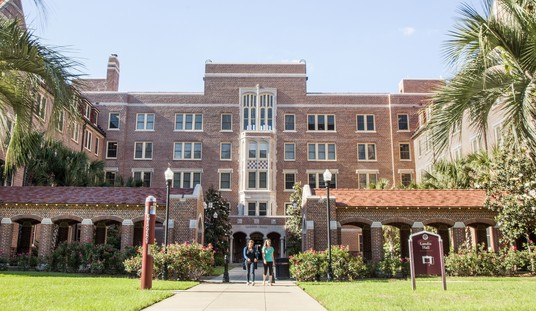It’s not the first time that Dr. Anthony Fauci has made this argument, but maybe it will be the first time it will break through the political/media noise over mail-in voting. The head of the NIAID said a week ago that healthy people who stick to mask and social-distancing protocols could safely cast their ballots at their local precincts, although that remark got understandably overshadowed by his cautious endorsement of reopening schools.
This time, ABC’s Deborah Roberts asked specifically about voting as part of a NatGeo panel she moderated yesterday. Fauci insists that the issue of in-person voting is no more fraught than grocery shopping for healthy voters, although high-risk voters might want to use mailed ballots “the way we have done so for years” (via Katie Pavlich):
Can people safely go out and vote in person this year? Dr. Fauci answers this and more in a @NatGeo virtual panel moderated by @DebRobertsABC. https://t.co/MPZzrQrKLS pic.twitter.com/6mYkTpOGOH
— ABC News (@ABC) August 13, 2020
“What about voting? So many people are concerned. We are in an election year. Some people are going to be heading to the polls in the next few weeks, can people go out and vote in person given there is so much concern about the vote?” ABC News’ Deborah Roberts asked Fauci during a recent interview.
“I think if carefully done according to the guidelines, there’s new reason I can see that not being the case. For example, when you look at going to a grocery stores now in regions and counties and cities that are doing it correctly, they have x’s every six or more feet and it says don’t leave this spot until the person in front of you left their spot, and you an do that. If you go and wear a mask, if you observe the physical distancing and don’t have a crowded situation, there’s no reason why you shouldn’t be able to do that,” Fauci said. “There’s no reason we shouldn’t be able to vote in person.”
This confirms what Fauci said previously, and what I have argued for weeks. A handful of states have mature vote-by-mail systems that should be able to handle the presidential election demand this year, but those voters are used to those systems as well. The rest of the states — including all of the presumed battleground states, and most of the high-population states too — do not. Two of them, California and New York, held primaries with mass mail-in voting and ended up with high failure rates. New York took weeks just to unwind its primaries, and the Big Apple’s ballot failure rate exceeded twenty percent.
Forget the fraud argument, which is marginal at worst and mostly a distraction. Why would we deliberately choose a system that risks disenfranchising one out of every five American voters when it’s not necessary to do so? Even if we’re disenfranchising one out of every twenty American voters, that’s a failure rate of 5%, and that would exceed the margins of victory in enough battleground states to undermine the outcome’s credibility. And that outcome might not be known for weeks after the election, as we saw in New York in its primary.
The answer to this is to commit resources to ensure proper safety at in-person voting precincts, and perhaps even open new ones to distribute the demand more fully, rather than sink money into mass mail-in balloting. If we can figure out how to shop safely at the grocery store, we can surely cast ballots in person, where the voting can be done reliably and counted quickly, and where voters at least have the opportunity to correct any mistakes and make sure their votes count.







Join the conversation as a VIP Member